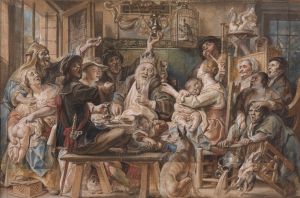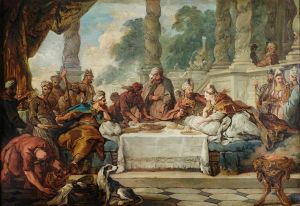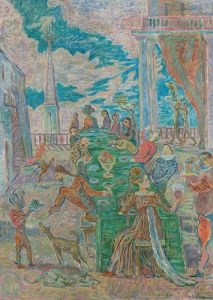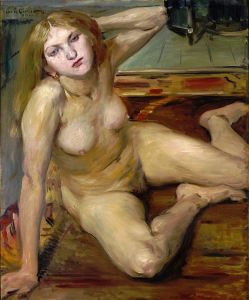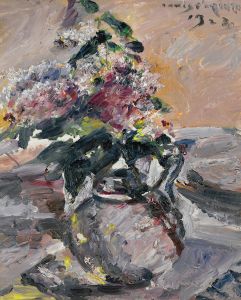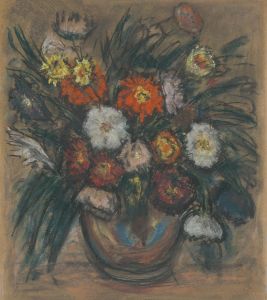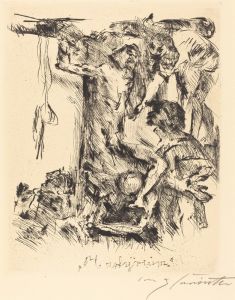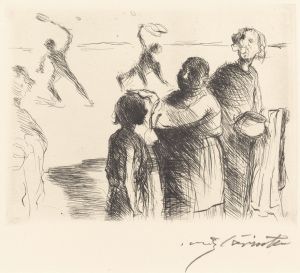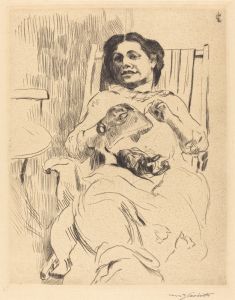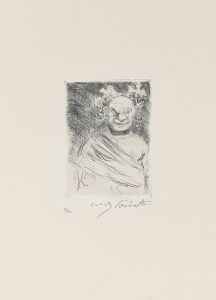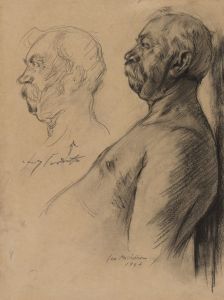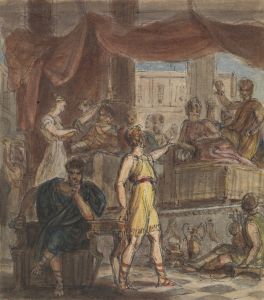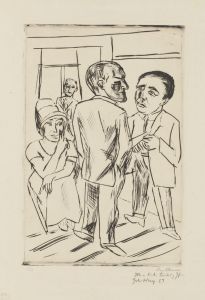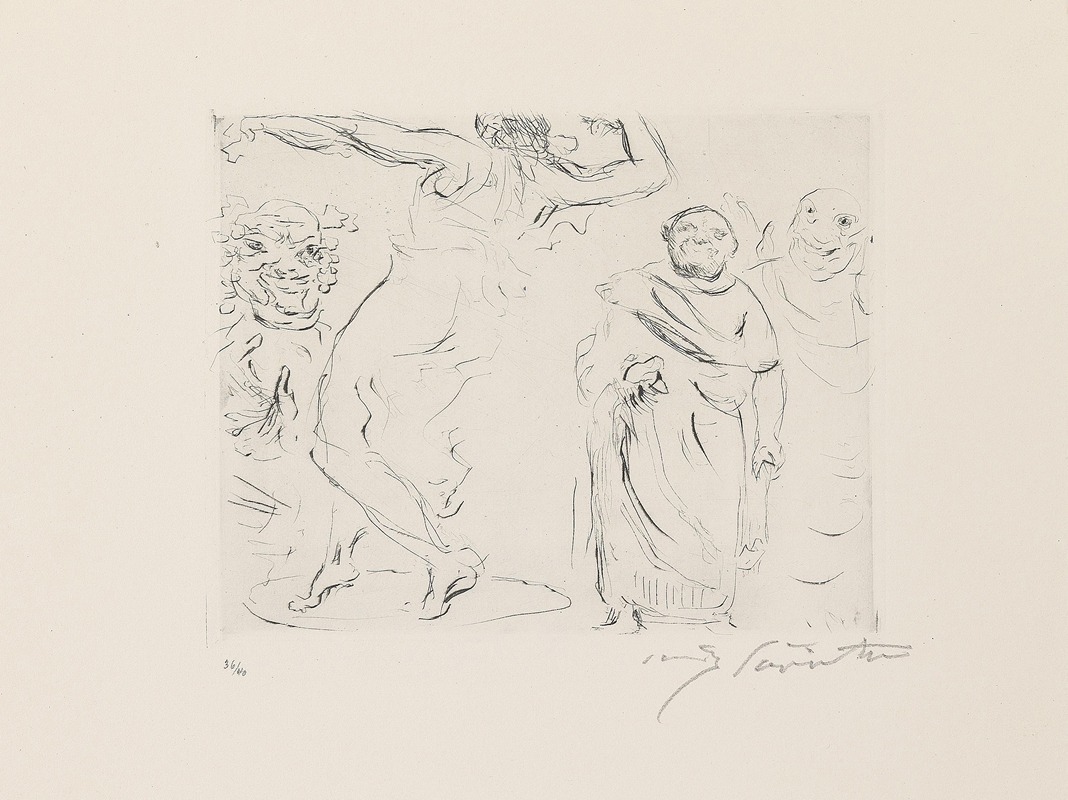
Gastmahl des Trimalchio 11
A hand-painted replica of Lovis Corinth’s masterpiece Gastmahl des Trimalchio 11, meticulously crafted by professional artists to capture the true essence of the original. Each piece is created with museum-quality canvas and rare mineral pigments, carefully painted by experienced artists with delicate brushstrokes and rich, layered colors to perfectly recreate the texture of the original artwork. Unlike machine-printed reproductions, this hand-painted version brings the painting to life, infused with the artist’s emotions and skill in every stroke. Whether for personal collection or home decoration, it instantly elevates the artistic atmosphere of any space.
Lovis Corinth's painting Gastmahl des Trimalchio 11 (translated as Trimalchio's Feast 11) is part of a series of works inspired by the Roman novel Satyricon by Petronius. The Satyricon is a satirical and episodic narrative that provides a vivid depiction of Roman society during the 1st century CE. One of its most famous sections is the "Cena Trimalchionis" or "Trimalchio's Feast," which describes an extravagant banquet hosted by Trimalchio, a wealthy and ostentatious freedman. Corinth's series captures the decadence, chaos, and theatricality of this scene.
Lovis Corinth (1858–1925) was a German painter and printmaker associated with the late 19th and early 20th-century art movements of Impressionism and Expressionism. Known for his dynamic brushwork and vivid use of color, Corinth often explored themes of mythology, history, and literature in his works. The Gastmahl des Trimalchio series reflects his interest in classical antiquity and his ability to reinterpret historical and literary subjects through a modern lens.
The painting Gastmahl des Trimalchio 11 is one of several works Corinth created to depict the lavish and grotesque atmosphere of Trimalchio's banquet. The series as a whole is characterized by its energetic compositions, dramatic contrasts of light and shadow, and expressive figures. Corinth's interpretation emphasizes the excess and absurdity of the feast, capturing the larger-than-life personalities and chaotic interactions of the guests. The painting likely reflects Corinth's fascination with human behavior, particularly the interplay of power, wealth, and indulgence.
While specific details about Gastmahl des Trimalchio 11 are limited, it is part of Corinth's broader exploration of the Satyricon and its themes. The series demonstrates his ability to blend classical subject matter with the stylistic innovations of his time, creating works that are both rooted in tradition and strikingly modern. Corinth's Gastmahl des Trimalchio series remains an important example of how 20th-century artists engaged with ancient literature to comment on contemporary issues and human nature.
Further information about the painting's current location, dimensions, or medium is not readily available.





